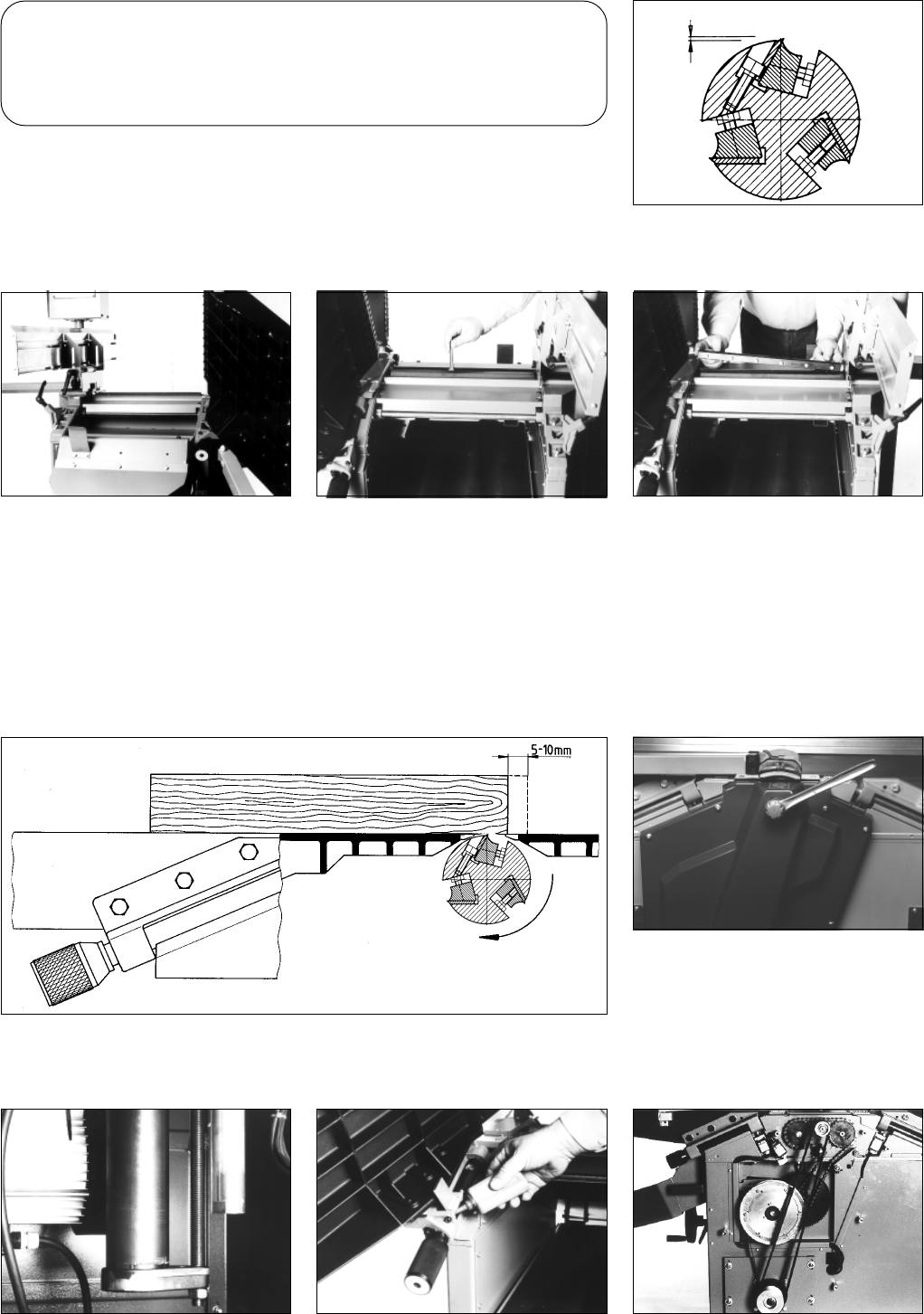
15.1 Planer Blade Removal
For removal and installation of planer
blades lift both planing beds up.
Loosen all 6 locking screws of the
cutterblock wedge with a 10 mm open
end spanner (turn clockwise).
The blade and the cutterblock wedge
can now be lifted from the cutterblock.
15.2 Checking Planer Blade Setting
To check the correct outfeed table setting, place a straight edge, ruler or a planed batten on the outfeed table and across
the cutterblock. Slowly turn cutterblock by hand. The blade must lift the straight edge/ruler and pull it forward by 5 - 10
mm. Mark start and stop position of ruler with pencil on table. Carry out this check on the left and right side of each of
the three blades. For a safe operation of this planer/ticknesser it is important that the installation and checking of the
blade table setting is carried out very carefully (risk of accident and personal injury to the operator.
To assist in manually turning the
cutterblock, remove the lid and place
a 24 mm socket wrench on the
cutterblock nut (wrench not supplied
with the tool set).
Note: The blades must have a minimum width of 22 mm.
Smaller blades can not be securely locked. The cutterblock wedge locking
screws must be tightened to a max. torque of 9 Nm. Applying more torque
may strip the threads. Use only the spanner supplied wit tool set to tighten
the locking screws.
16 Care and Maintenance
16.1 Lubrication
The thicknesser bed column has a
lubricator nipple. Lubricate at least
once a year.
Regularly apply a few drops of oil to
the planing bed hinges and to all other
moving parts.
Lubricate feed roller bearings with a
few drops of oil, as required, but at
least once a year.
1
Max. planerblade projection over the
cutterblock is 1.0 mm.


















